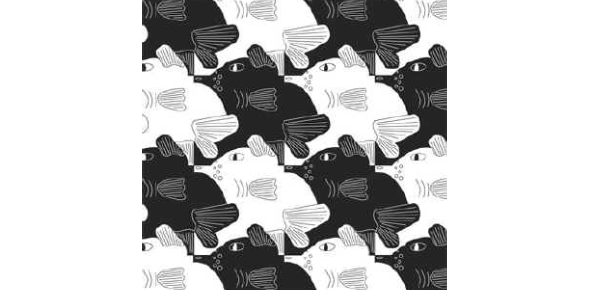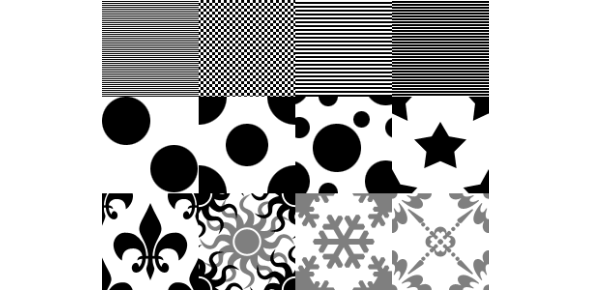Tessellation Geometric Shapes Quiz

This is a chance to see if the students have understood the concept of tesselations.
- 1.
What is a tessellation?
- A.
A picture
- B.
A pattern with no gaps or overlaps
- C.
Tiles on the floor
- D.
Shapes all put together
Correct Answer
B. A pattern with no gaps or overlapsExplanation
A tessellation is a pattern that is created by repeating a shape without any gaps or overlaps. This means that the shapes fit together perfectly, like puzzle pieces, to cover a surface. This pattern can be seen in various forms such as tiles on the floor or in a picture where shapes are all put together to form a larger design.Rate this question:
-
- 2.
What is a polygon?
- A.
Shapes
- B.
Circles
- C.
A closed figure made by joining line segments
Correct Answer
C. A closed figure made by joining line segmentsExplanation
A polygon is a closed figure made by joining line segments. It is a shape that is formed by connecting multiple straight lines together to create a closed shape. This closed shape does not have any openings or holes and is made up of line segments that connect at their endpoints. Examples of polygons include triangles, squares, rectangles, pentagons, and hexagons. Circles, on the other hand, are not considered polygons as they are not made up of straight line segments.Rate this question:
-
- 3.
What is a plane?
- A.
2-dimentional surface
- B.
A square
- C.
A box
- D.
Means of transporation
Correct Answer
A. 2-dimentional surfaceExplanation
A plane refers to a two-dimensional surface, meaning it has length and width but no depth. It can be visualized as an infinitely large and flat sheet that extends in all directions. In mathematics, a plane is represented by a coordinate system with two axes, usually labeled x and y. It is often used as a reference for geometric shapes and calculations in geometry and physics.Rate this question:
-
- 4.
Is the picture above a tessellation?
- A.
No
- B.
Yes
Correct Answer
B. YesExplanation
The picture above is a tessellation because it is a repeating pattern of shapes that completely covers the plane without any gaps or overlaps.Rate this question:
-
- 5.
What is a vertex?
- A.
The end of the line
- B.
Common endpoint of two or more rays or line segments
- C.
A triangle
Correct Answer
B. Common endpoint of two or more rays or line segmentsExplanation
A vertex is defined as the common endpoint of two or more rays or line segments. It is the point where these lines or segments meet or intersect. In geometry, a vertex is often represented as a dot or a point. It is an important concept in understanding the structure and properties of geometric shapes and figures.Rate this question:
-
- 6.
A ______ polygon is a polygon in which all sides and all angles are equal.
Correct Answer
regular, RegularExplanation
Regular polygons have a high degree of symmetry and are often used in geometric constructions and designs. Examples of regular polygons include squares, equilateral triangles, and regular hexagons. Understanding the properties of regular polygons is essential for various geometric calculations and problem-solving.Rate this question:
- 7.
When do tessellations stop?
- A.
They continue forever
- B.
After the page
- C.
When the plane is full
Correct Answer
A. They continue foreverExplanation
Tessellations are patterns that can be repeated indefinitely, without any gaps or overlaps. This means that they can continue infinitely in all directions, without ever stopping. Therefore, the correct answer is "they continue forever."Rate this question:
-
- 8.
What does it mean when two figures are adjacent?
- A.
They are repeated
- B.
They overlap eachother
- C.
Two sides meet to make an angle
Correct Answer
C. Two sides meet to make an angleExplanation
When two figures are adjacent, it means that they share a common side or edge and the two sides meet to form an angle. In other words, the figures are positioned next to each other in such a way that their sides come together at a point, creating an angle between them. This concept is commonly used in geometry to describe the relationship between two figures that are in close proximity to each other.Rate this question:
-
- 9.
Is the picture above a tessellation?
- A.
No
- B.
Yes
Correct Answer
A. NoExplanation
The picture above is not a tessellation because a tessellation is a pattern of shapes that fit together perfectly with no gaps or overlaps. In the given picture, there are gaps between the shapes, indicating that it does not meet the criteria of a tessellation.Rate this question:
-
- 10.
Is the picture above a tesselation?
- A.
No
- B.
Yes
Correct Answer
B. YesExplanation
The given answer is "Yes" because a tessellation is a pattern of shapes that fit together without any gaps or overlaps. Based on the information provided, we cannot see the picture above, so we cannot determine if it is a tessellation or not.Rate this question:
-
Quiz Review Timeline +
Our quizzes are rigorously reviewed, monitored and continuously updated by our expert board to maintain accuracy, relevance, and timeliness.
-
Current Version
-
Jan 15, 2025Quiz Edited by
ProProfs Editorial Team -
Oct 15, 2015Quiz Created by
Jancohen
 Back to top
Back to top





.webp)